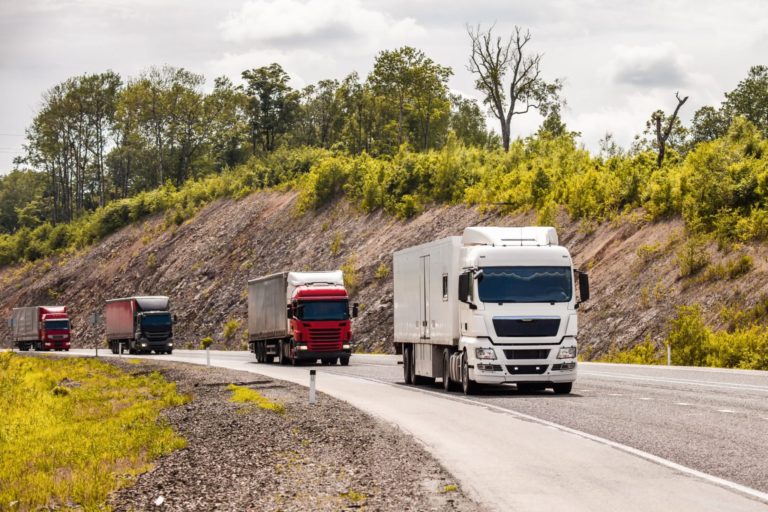For logistics operators, electric vehicles offer an essential pathway to operational savings and climate and sustainability goals, but power bottlenecks continue to put the brakes on electrification. Jamie Aspin, business development manager at Eclipse Power Networks, explains how fleet managers can keep their electric fleet deliverables on track.
There’s a huge environmental imperative for moving fleets electric – In 2023, road vehicles were responsible for more than a quarter (26%) of all UK emissions, and one third of that came from buses, HGVs and vans.
Businesses have their own commercial and strategic drivers for electrification, too. Whether meeting environmental and sustainability goals, or under pressure to reduce emissions for customers’ Scope 3 accounting, haulage and logistics operators can gain a strategic advantage through early adoption of electric vehicles. In so doing, they also have the potential to unlock lower fleet operating costs, improved vehicle performance, and simplified maintenance schedules.
But despite the immense promise of electric HGV fleets, operators face significant barriers to uptake. Questions over upfront costs and residual values deter investment, while opaque total cost of ownership data can leave investments hard to justify. At the same time, a lack of depot and opportunity charging infrastructure present foundational problems to fleet operators looking to electrify.

The power imperative
Unlike the typical car or van fleet, electric HGVs require significant infrastructure upgrades. With a battery capacity up to ten times that of a van, operators looking to turn an eHGV around overnight need DC chargers, capable of providing up to a few hundred kilowatts to each vehicle. For a fleet of eight eHGVs, that could mean a maximum power demand of several megawatts (MW) without charge management to reduce the peak value.
Even this won’t be enough for certain applications, particularly where turnaround times are very short, or where a fleet is working to maximise the use of haulage assets – for example running the same vehicle with multiple drivers over a 24-hour period. Here, depots will be likely to require Megawatt Scale Charging (MCS) facilities, with individual chargers rated up to 3.75MW – enough to turn an eHGV around as quickly as it can be reloaded.
While there’s funding available for depot charge points through the Depot Charging Scheme, DC charger – and especially MCS – power demands are clearly far beyond the likely capacity of the typical bus or logistics depot’s connection to the power grid. Most facilities were built long before electric vehicles were a reality, with power connections specified to handle typical light industrial loads: heat, light, or refrigeration. As such, they’ll need very significant grid connection and infrastructure upgrades before they can support multiple DC or MCS chargers.
And that’s where the real problem comes. Despite reforms to the market, securing a multiple megawatt connection – as needed to charge a small fleet of eHGVs – usually takes several years, delaying organisations’ electrification plans, and in turn imperilling the UK’s net zero targets.
These grid obstacles often seem like a hard barrier, especially when you factor in cost. For example, I know of a business with a four-megawatt (technically, four megavolt-amperes (MVA)) grid connection, that needs a total of 12MVA to power eHGV chargers. It was quoted £15 million by its distribution network operator (DNO) for the necessary 8MVA upgrade, and given a connection date six years into the future.
Faced with long waits and such huge investments, fleet operators are often forced to abandon or stagger their electrification plans. It’s highly restrictive and can leave them juggling more complex fleet management, as any potential schedule for electric vehicle upgrades is dictated by when the depot will finally get more power.
A winning strategy
Despite these very real challenges, HGV operators can find creative ways to remove the roadblocks and accelerate their journey to an electric fleet. One excellent workaround for long upgrade queues is to leverage the full capacity of the existing connection. By installing battery energy storage systems (BESS), fleet operators can stockpile energy from the grid when the depot is quiet, and deploy battery and grid power together to charge electric vehicles when they return. Ideally, adding renewable generation to the mix reduces the reliance on grid power, and lowers both energy costs and emissions.
Where there isn’t the readiness to invest in power infrastructure – or the depot space for BESSs or renewables – operators could consider partnership with energy developers. This is particularly beneficial in areas with significant renewable or redevelopment potential, where generators and demand customers can link up via a private electricity microgrid. This provides generators with a direct customer, and the customer with an enhanced supply for its depot, with both parties saving vast distribution use-of-system charges over the project’s lifetime.
While a small microgrid project could leverage existing grid connections, partnering with a generator could also improve the timescale for a much larger connection or upgrade offer. Under Ofgem’s TMO4+ reforms, connections are prioritised for generation projects that are both ‘ready and needed’. In practice, this means that certain generation projects are likely to receive connection dates far ahead of anything a lone demand customer could obtain.

Less of a long haul
However, planning and delivering creative grid connection and microgrid projects takes deep expertise, and flexibility not available from DNOs. That’s why working with independent distribution network operators (IDNOs) and connection providers (ICPs) is an essential component of unblocking electrification.
IDNOs enable fleet operators to tap into the expertise and innovation they need to solve depot power challenges, and accelerate the route to fleet electrification. We can propose and accept a wider range of technical solutions than DNOs, allowing novel approaches that may save time, money, or space – for example through a more compact substation in the depot.
There’s a further, often significant cost benefit. As IDNOs ‘adopt’ the distribution assets, taking them into ownership after they have been commissioned and energised, they will make a capital contribution to the project, lowering the up-front costs. IDNOs can also support fleet electrification plans through phased power upgrades, an ideal way to gain capacity to match your own electrification schedule, and avoid paying for huge connections that aren’t yet being fully used.
Not all IDNOs are equal, however, and few have the expertise to deliver advanced infrastructure projects such as microgrids and private networks. Choosing the right partner is essential to getting the best electrification outcome; balancing time and cost against the undoubted benefits of moving to an electric fleet.














